I get a lot of emails in my inbox about new products. Many of them are immediately discarded, and some result in follow-ups from me asking whether I can borrow one to review. I didn’t ask Wimberley for a review sample of the MH-100 MonoGimbal; I rushed to the B&H website and purchased one immediately. I knew I wanted it!
Table of Contents
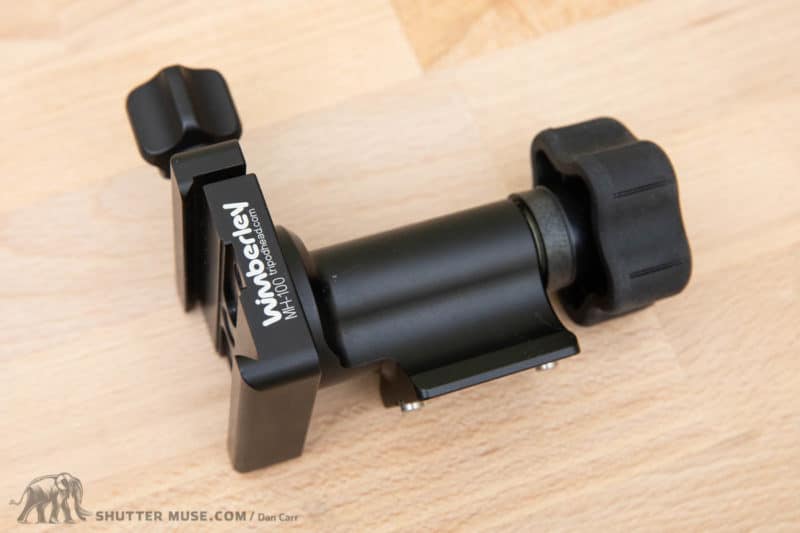
The Wimberley MonoGimbal’s Unique Design
The Wimberley MonoGimbal is designed primarily as a gimbal for your monopod, although, as I’ll demonstrate later in this review, you can expand that usage to even bigger things, too. What’s cool about this monopod head is that it looks and operates absolutely nothing like any other one on the market right now, though I don’t doubt there will be copycat products at some point..
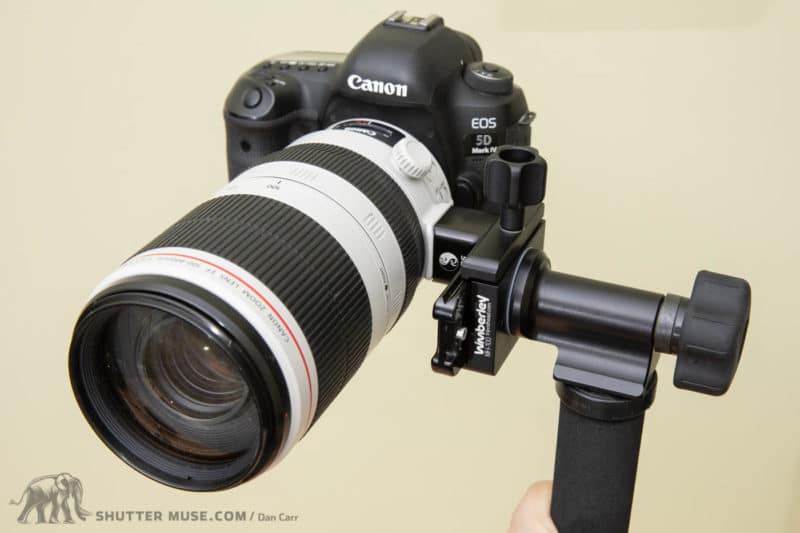
Ball heads are no good at all on monopods; they have too many axes of movement. If you were to try and use a ball head on a monopod with a head that has a tripod collar, you’d find that the whole thing is a disaster when you loosen the ball lock knob. Everything goes floppy, and with one hand having to hold the monopod, you can’t accurately position and lock the camera at all.
This means you need a specific monopod head that limits some range of motion when unlocked, and traditionally these have been built around a tilt-head design. Sometimes, these tilt heads also have a separate panning base with an independent locking knob. When a tilt head is unlocked, it only allows the camera to tilt fore and aft, allowing you to angle your lens up and down.
The left to right motion that you need to frame up a shot from a monopod is handled by rotating the monopod, and the left/right roll of the horizon in the image is handled by turning the lens in the tripod collar. Note then that to use a monopod head effectively, you must use it with a lens with a tripod collar. The same can be said for both the traditional tilt-head design and this newer MonoGimbal design.
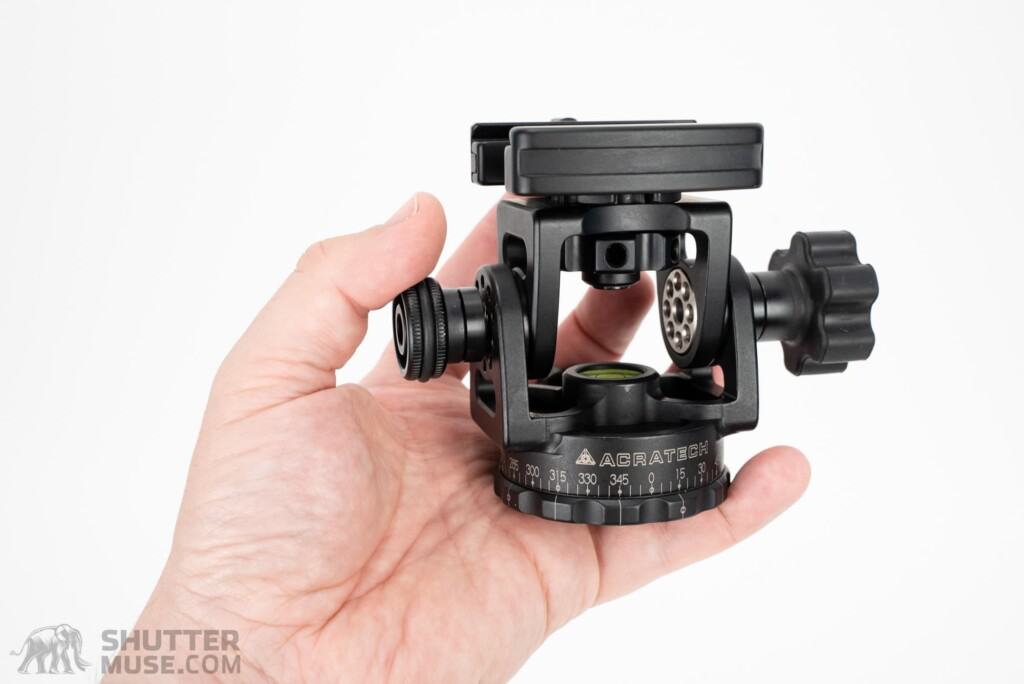
MonoGimbal Vs Tilt-Head
The problem with this traditional style of monopod head is that it has an almost infinitesimally small margin for error if you were to try and perfectly balance a camera and lens on top of it. It’s simply impossible because the pivot point is directly beneath the camera/lens setup, like trying to balance a marble on top of a pin.
What this means is that when the tilt head knob is loosened with one hand, if you don’t have your other hand on the camera, the lens will either swing rapidly upwards or downwards, clouting either the camera or the lens on the monopod, as well as giving you an excellent heart-in-mouth moment while you hope you tightened the clamp.
Holding the camera is a viable solution, and it has been for many years. That’s why a quick search on B&H for the term “monopod head” will turn up at least twenty different monopod heads that all look almost identical to the Acratech or RRS ones pictured above. But it turns out that there was a better solution all along, and the Wimberley MonoGimbal is it.
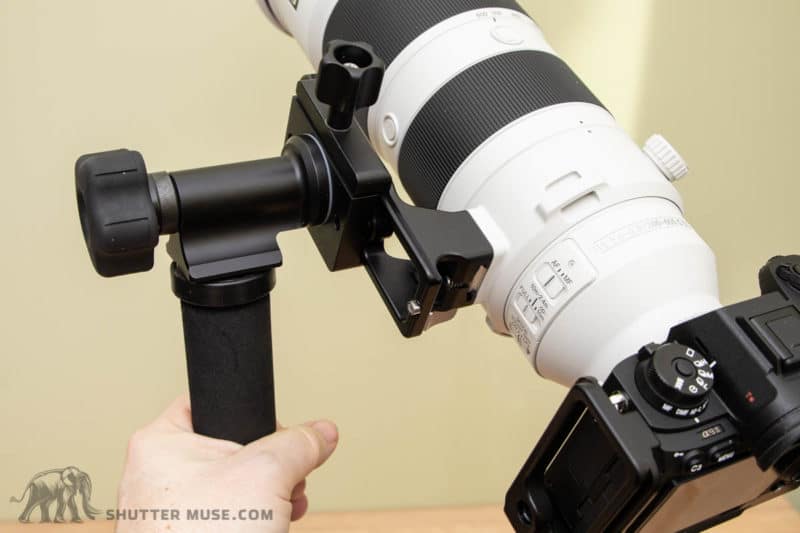
The side-mount design of the MonoGimbal allows you to easily slide your lens foot fore and aft in the screw-lock clamp until you reach the balancing point of your setup. At this point, you can let go of your camera, and it will sit in the same place, just as it would on a larger tripod gimbal head. There’s a lot more leeway with this design, too. If your lens balance is slightly off, it won’t come crashing down. It’ll simply rotate slowly upward or downward, allowing you to catch it gently with your hand or merely tighten the locking knob to prevent it from going further.
Another benefit of this design over the traditional monopod head design is that the MonoGimbal locking knob also offers a degree of friction control on the fore/aft tilt. Anyone who used a conventional monopod head, even the pricey Really Right Stuff one, will know that the locking knob on those heads feels much more like an on/off switch. Not so with the MonoGimbal, which gives you some adjustable rotational friction instead.
Initially, the side-mount position of the lens and camera looks a bit weird and awkward. When it comes to using this setup, you’ll have to counteract the position of the lens by tilting the monopod very slightly in the opposite direction. This sounds like a bit of a pain. Still, I found that you end up doing it subconsciously, and the necessary tilt in the opposite direction is not nearly as much as you might imagine required. In the end, it becomes a non-issue. With this setup, you can easily stand around for hours and not feel fatigued by its use.
Attaching the MH-100 MonoGimbal to your monopod
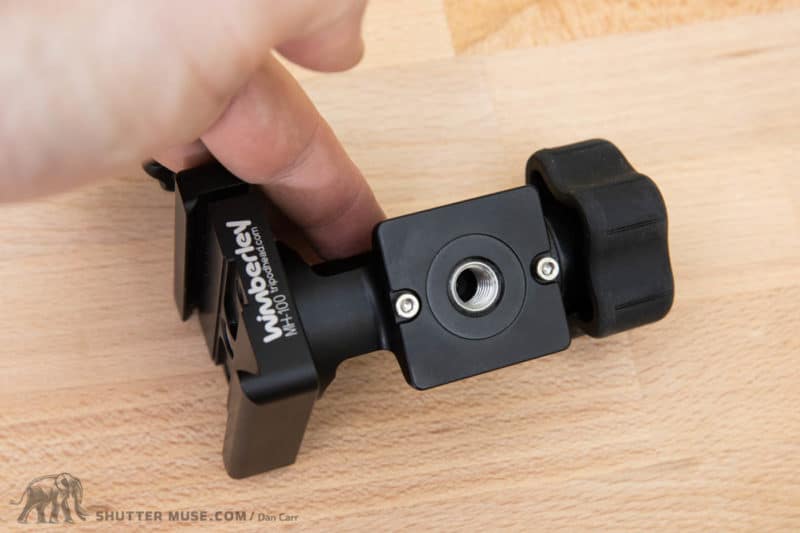
The MonoGimbal has a 3/8-16 threaded hole on the bottom, allowing you to attach it natively to any monopod that has a 3/8-16 stud on the top. Alternatively, you can install a reducer bushing into the 3/8-16 hole to allow you to mount it onto a 1/4-20 stud. If it’s going to be a permanent accessory, I’d recommend a little blue Loctite to keep things fixed in place.
The base of the head is also an Arca dovetail itself, so another alternative is to put an Arca quick-release clamp on the top of your monopod and then clamp the MonoGimbal into that. The benefit of this setup is that the head can be removed quickly and put in your bag to prevent damage, or you could remove it and clamp things directly to the monopod when you feel the gimbal is not necessary. At the moment, I have mine attached directly, but I’m considering going to a quick-release solution soon for protective purposes.
Can You Use the Monogimbal on a Tripod?
The product’s name suggests the MonoGimbal was intended for monopod use only. Still, the dovetail on the base also makes it very easy to clamp onto a ball head, and you could certainly use it this way if you didn’t want to carry a larger gimbal with you. I love my big tripod gimbal (I use the ProMediaGear Katana Jr ), but there’s no denying that it’s a big heavy beast, and on trips where I want both a gimbal and a ball head, the combined weight starts to become an issue. I can see myself packing the MonoGimbal and a ball head on trips where I want to save some weight.
A word of warning, though. If you experiment with this setup, you must be very careful, and I would recommend having a hand on the tripod at all times. Suppose you rotate the ball head on its pan base, with the lens hanging off the side on the MonoGimbal. In that case, you will alternately go through angles where the setup is very stable when the camera is directly above an outstretched tripod leg and then considerably less stable when it is between two tripod legs.
If you are using the very heaviest setups, such as a pro-sized camera and a 600mm lens, it could very well be enough weight to tip the tripod over in this configuration. You have been warned! It’ll save you some weight, but you’ll need to be more vigilant.
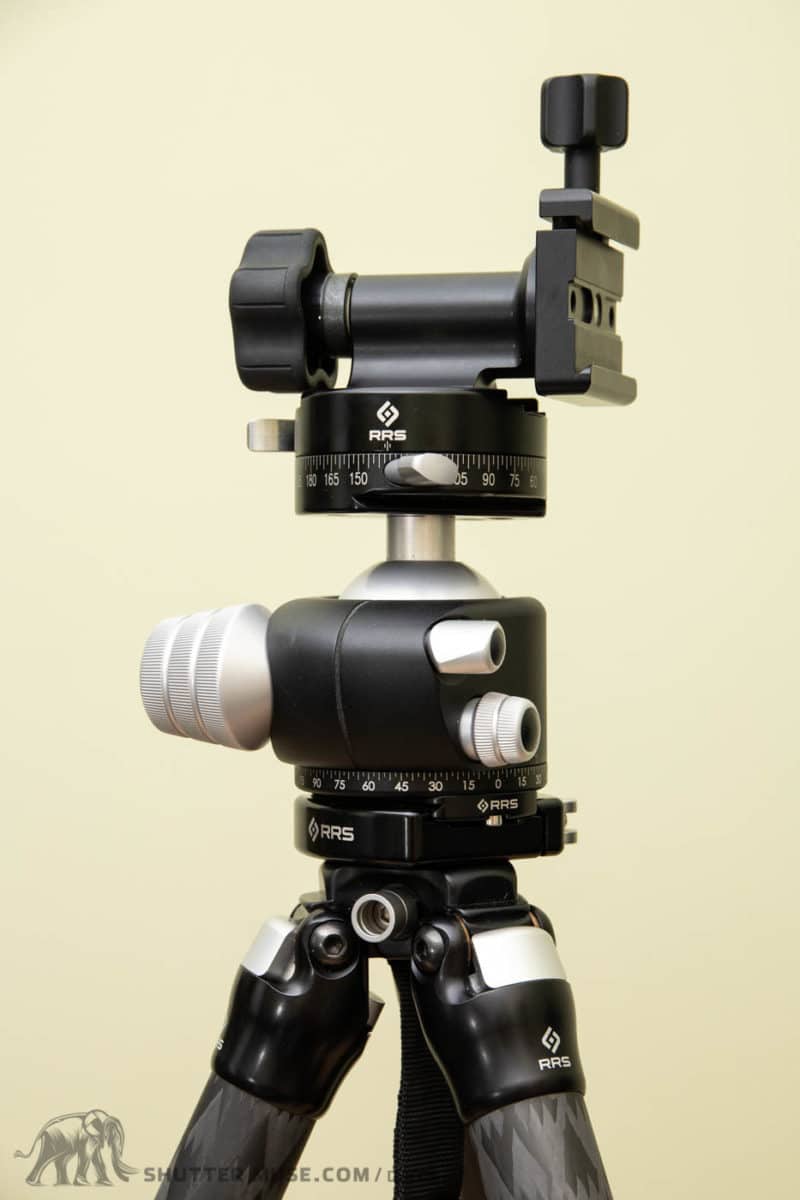
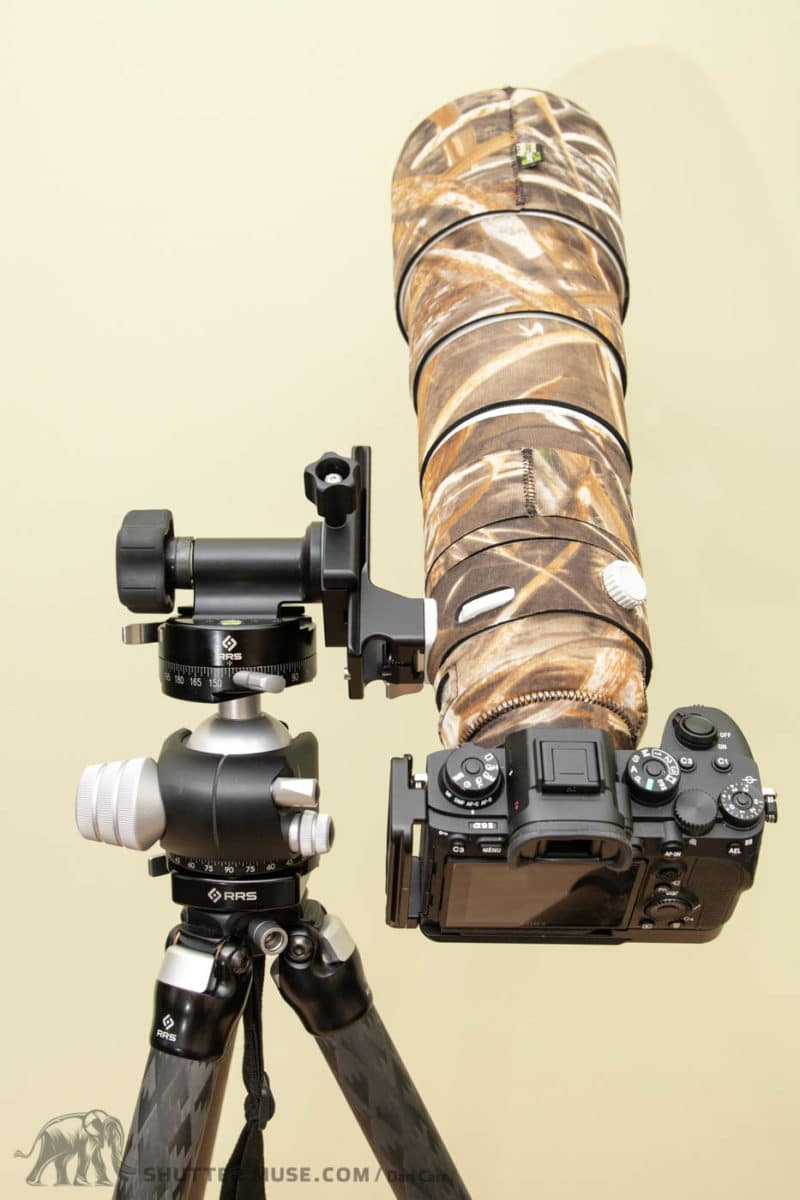
Conclusion
I’m sure you have realized by now that I love this thing. It has reinvigorated my love for using a monopod, and now I won’t pack a camera bag without it. It has made using a monopod a viable solution in many situations where I previously needed to carry a much larger tripod with a heavier traditional gimbal head. If you had told me that my favorite accessory of the year would be a monopod head, I wouldn’t have believed you because I would have imagined a head with the more traditional tilting design!
I know this head has been selling like crazy for Wimberley, and they deserve all the praise they are getting for thinking outside the box and producing something so simple yet so effective. And also for doing it so beautifully at such a reasonable price point.
Unsolicited Comment
Just a quick note of thanks. I’ve been reading your reviews for a long time and appreciate them as being honest and valuable. I try and use your affiliate links. You recommended something which I’ve just gotten, the Wimberley MonoGimbal monopod head, and calling it (photo) life-changing might seem hyperbole but it really is. I was a professional photojournalist for 25 years and did a lot of sports shooting with long lenses using monopods, and God I would have paid big money for this head then. Now I’m shooting a lot of everything and just got 180 to 600 Nikon Z lens, so I’m back to using a monopod a lot. This head is a game changer. I love it SO MUCH.
Patrick – Shutter Muse reader via email.


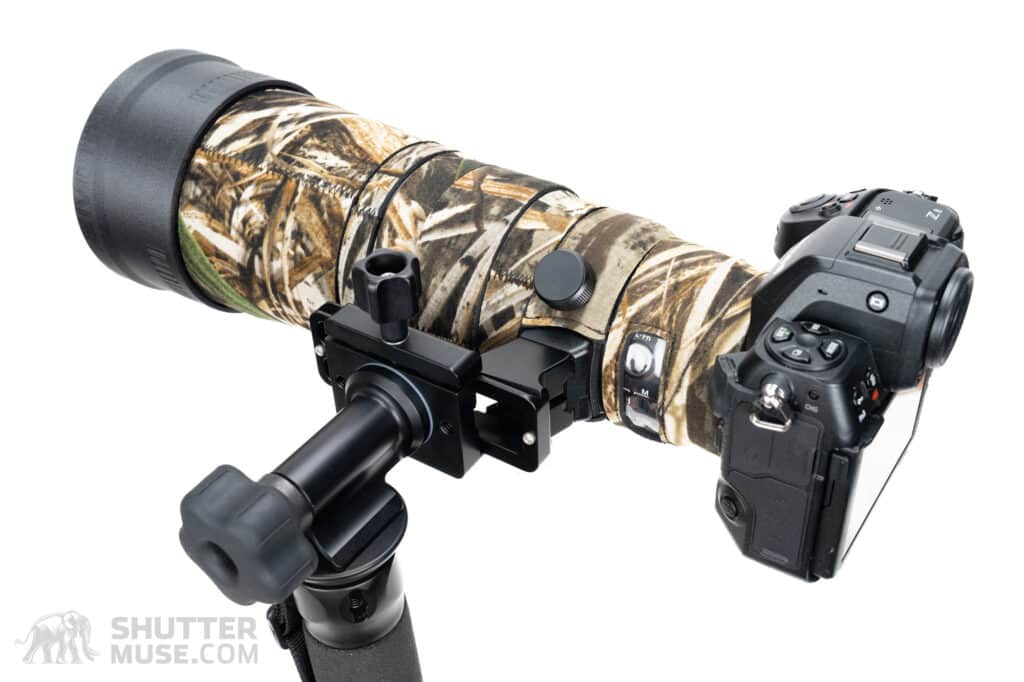
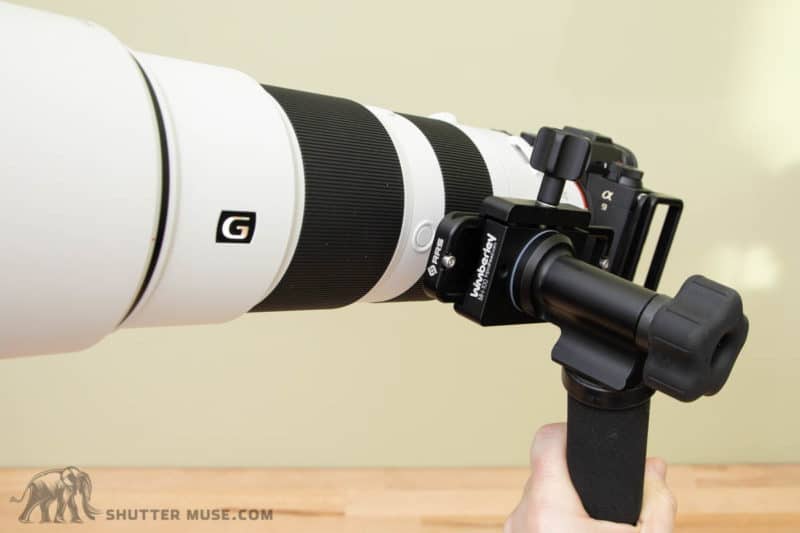
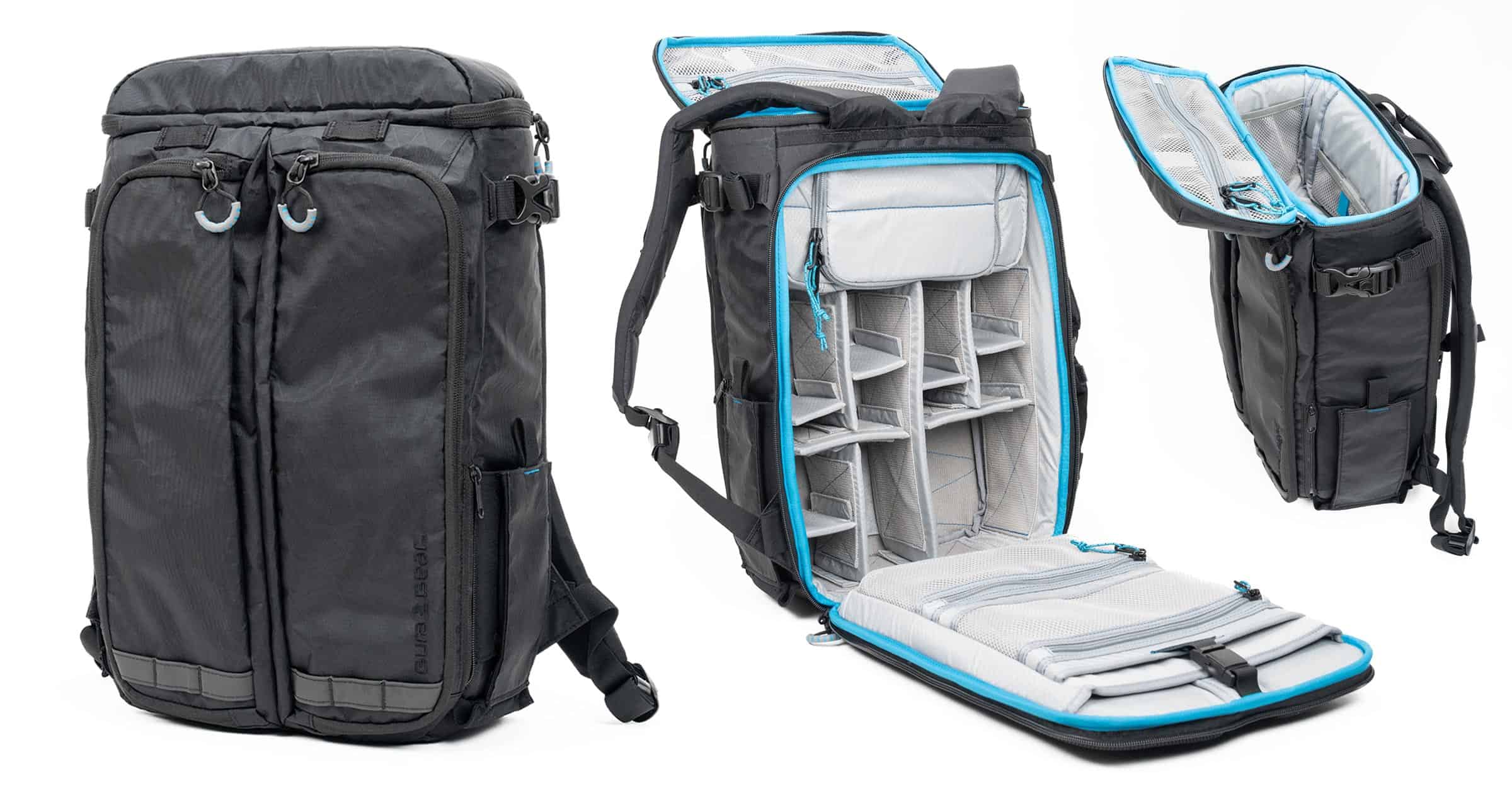
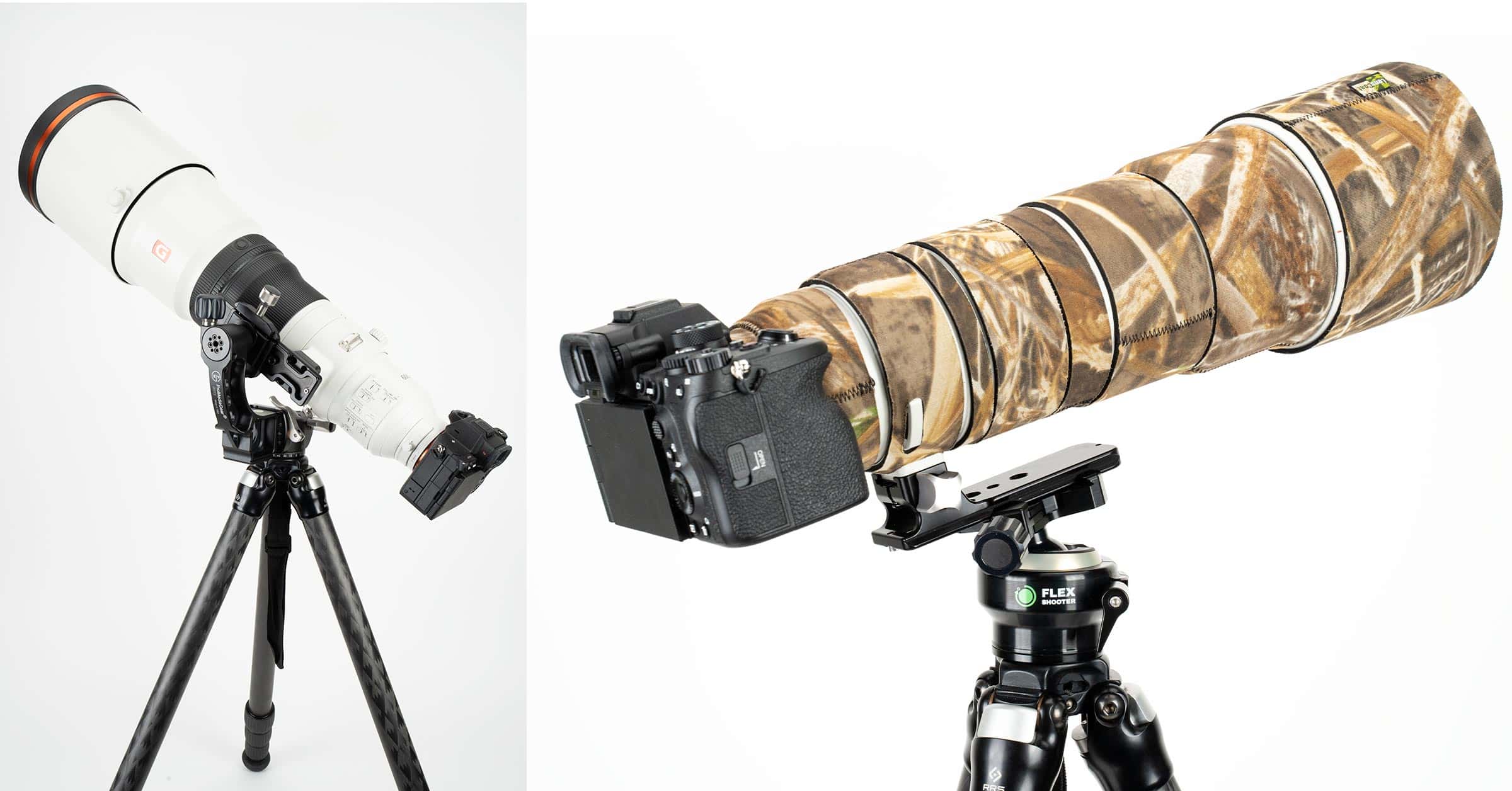

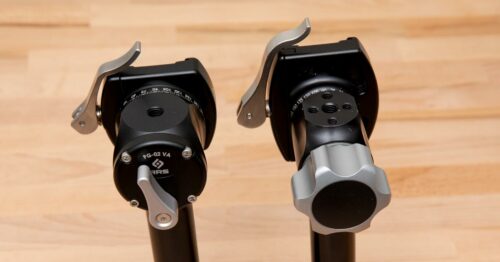

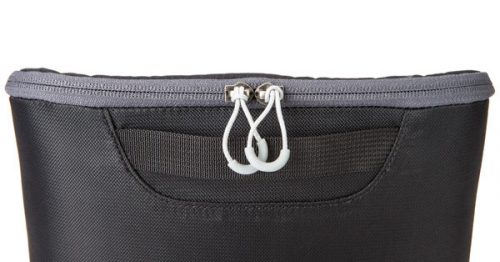


Dan, I bought the winner key monopod gimbal to replace my Kirk MPa2 which failed. I have had it about 6 weeks. Just back from a week in Norfolk UK experiencing gales. Wet and snow. The head is fantastic. Light with full gimbal functionality on a monopod. U need to experience it to understand. Alan
Oops forgot to mention I am using it mainly with a canon 500mm L Maoist with 1.3 extender
Damn predictive text!!!!!
That was funny, Alan. Dan, do you think they will ever make a gimbal with a manfrotto quick release compatible mount?
Alan, thanks for your thoughts! I’m glad you are enjoying it. I agree that it kind of needs to be experienced to appreciate it in full, but I’m hoping my enthusiasm in the review at least gets a few more people to take a closer look.
Jim, I doubt that they will. You need a lot of force to securely hold a heavy camera at right-angles like this. Arca clamps with a screw-knob are very strong, I’m not so sure about Manfrotto… and I don’t think Wimberley has ever made a Manfrotto-compatible clamp.
Hey Dan, were you able to zoom in and out with the lens without having to readjust the camera every time?
Really depends on the lens. If it’s an internal zooming lens then you will probably not have to readjust. My 200-600 seems to be fine for example. If you had an external zoom that really had a long range then it might set things off balance. But probably not by a huge amount. It might mean that at the extreme of the zoom the lens would slowly tilt down if you let go of the camera. I don’t think it would make it something that renders it unusable. It is the same with any kind of gimbal, whether it’s this or the larger ones you use on a tripod.
Worth mentioning also is the fact that the head can be used with shorter lenses that do not have a tripod collar, IF the camera has an “L” bracket attached.
That’s true. Do you use it that way?
I have and it works fine. It helps to use the Rule of Thirds” grid to keep the horizon line straight.
I am not an experienced monopod user and my biggest challenge is remembering NOT to let go…
Thanks for your review! If clamp a Sidekick (SK-100) into this head, could they become a gimbal for compact travel? (In some respects like Fotopro E-6H)
That would be kind of pointless. You would have to lock the Monogimbal, so then you are carrying what has simply become a rather expensive clamp. I don’t know why you would do this. And the whole thing would weigh more than an excellent proper gimbal like the PMG Katana Jr.
Hi Dan,
Very interesting review, as are all your others… thanks. I’ve been using a Manfrotto 234RC tilt head on a monopod for sports since forever and it’s done the job as I really use the tilt function to balance and shoot up/down. But I never liked the quick release plate’s single screw as the lens sometimes rotates around it and it never felt all that secure. Arca is clearly a more secure system. I did like the ability to fold the monopod in-line with the lens for carrying though.
This monogimbal design looks really interesting. Have you by chance used it with a Sony 400mm 2.8 GM lens? What foot or plate did you use and how does it balance? If you put lens on right of monopod it would limit holding lens with your left hand, no? Yet if you put lens on left of monopod it would be hard to hold the monopod with your left hand… no?
How does it work carried over your shoulder when e.g. running?
The other thing I was concerned about was with the side-by-side design it would take up more space in a crowded press bench.
Sorry for all the questions… trying to decide if this would work for me or I should go with more conventional design like Siriu L-10…..
Hey Ben. I haven’t used it with a Sony 400mm 2.8 GM lens. You do make a very good point about being on a crowded press bench. It has been a while since I did sports wire work, but I can see it definitely being a tighter squeeze. My main thought here is that if you are on a bench and not varying your height with respect to the action, the benefits of the head might be lost anyway. If you are on the sidelines, for example, you do not need a lot of up and down tilt as the action is at a constant level. That’s why you don’t see a lot of monopod heads on the sidelines at all. Might be different if they are putting you up high in the rafters, though.
As for holding the lens, I put the lens on the right of the monopod. My left hand usually is placed on the left side of the lens hood to add stability. Essentially I’m reaching forward past the monopod. I have never given this a second thought. It is fine like this.
Hi Dan have you or anyone used the Movo GH600 (sorta like a wimberly sidekick). It is carbon fiber, it looks balanced and is 99 bucks. The price for the MH100 is a little steep for holding a lens off the side of a tripod, not being balanced especially with a 400 2.8 or 600 F4 and a 1dx. It would be good to spend less and get more, more stability.